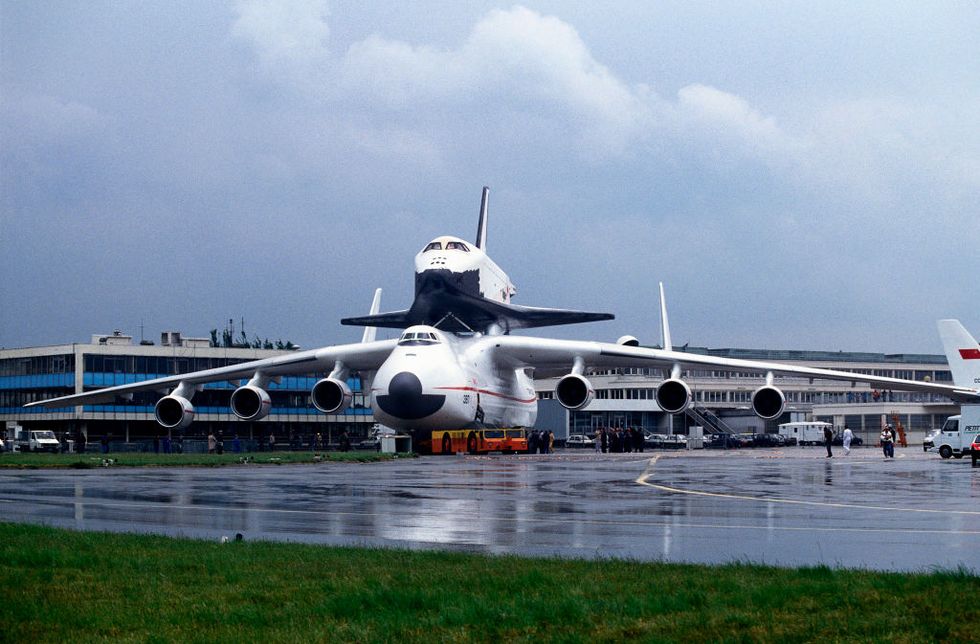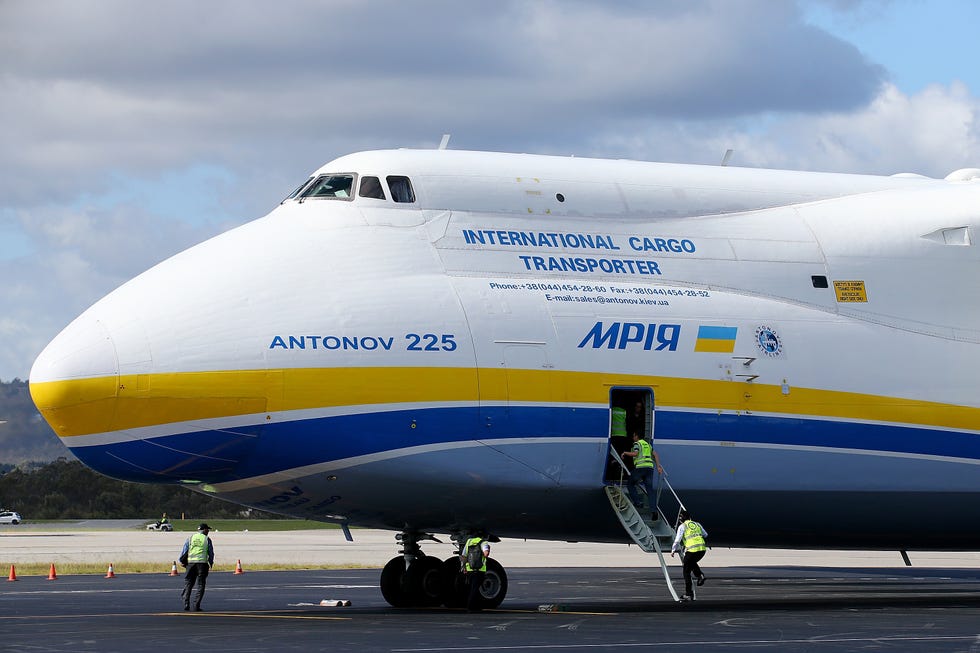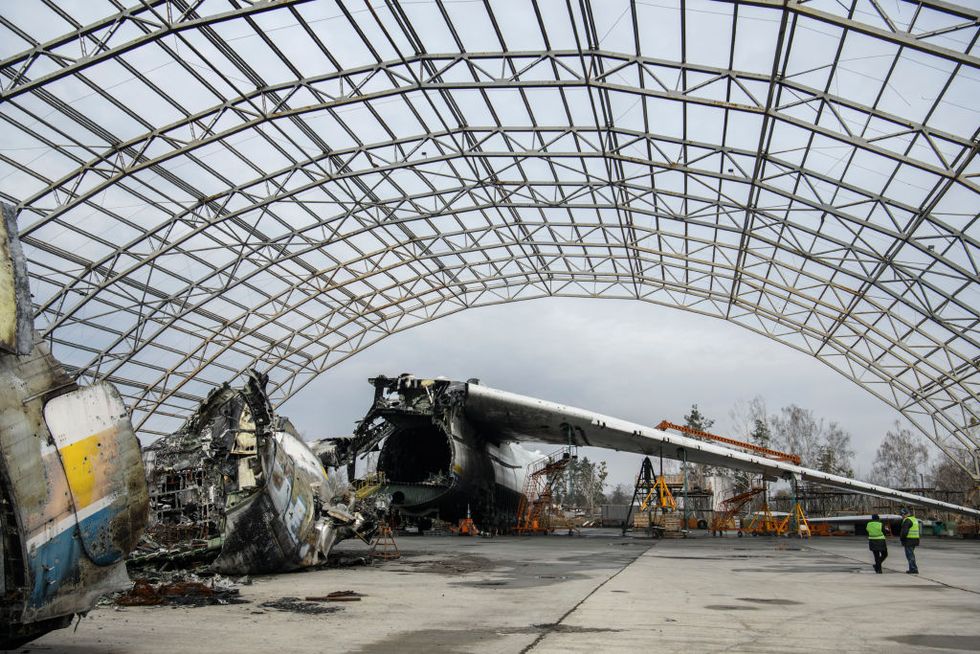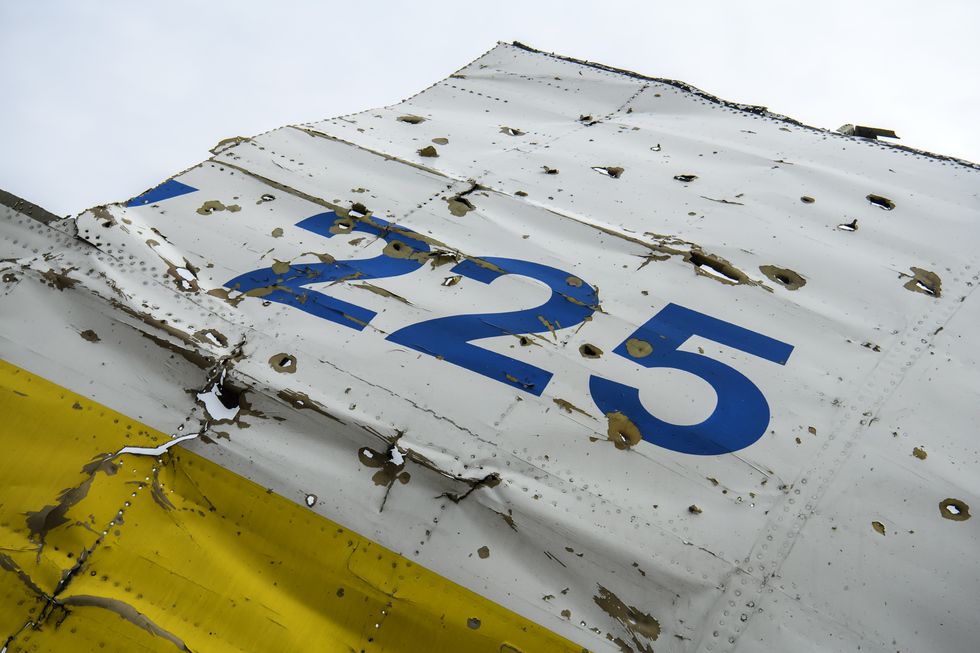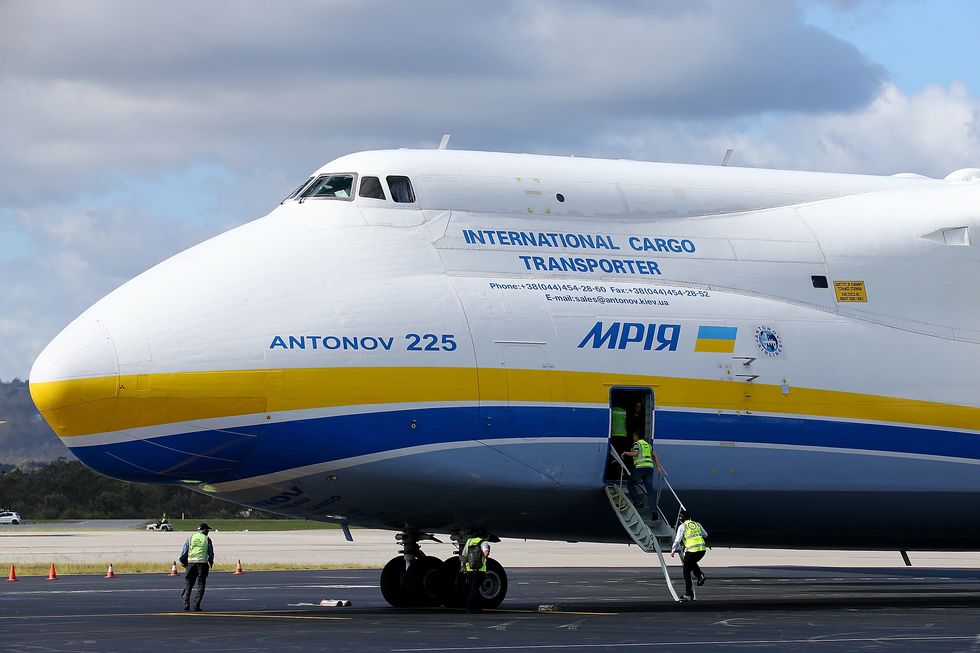
The Antonov An-225 Mriya—once the world’s largest aircraft—lies in pieces in an airport northwest of Ukraine’s capital city, Kyiv. Heavily damaged during fierce fighting between Russian paratroopers and Ukrainian troops, the aircraft will almost certainly never fly again. While the completed Mriya was one of a kind, Ukrainian President Volodymyr Zelenskyy has promised to finish building its partially completed sister plane.
The Soviet Behemoth Rises
During the Cold War, the Soviet Union’s airliner and heavy aircraft transport sector was dominated by the Antonov design bureau. In the early 1980s, Antonov designed and built the An-124 Ruslan (NATO code name: “Condor”), a military transport designed to beat the mighty American C-5 Galaxy, then the world’s largest transport aircraft.
In order to transport the Soviet Union’s two Buran space gliders, Antonov built a derivative of the An-124 military transport, the An-225. It was built to carry a Buran shuttle piggyback style, while at the same time having a truly massive cargo hold.
The Soviet Union planned to build just two An-225s. The specifications called for an aircraft with a length of 275 feet, a wingspan of 290 feet, a total of six ZMKB Progress Lotarev D-18T turbofan jet engines, and a forked tail. This gave the aircraft a cruising speed of 497 miles per hour, a range with maximum payload of 2,813 miles, and a maximum payload of 551,150 pounds—nearly twice that of the C-5M Super Galaxy.
A Symbol of National Unity
The Soviet Union was dissolved in 1991, by which time the Kyiv-based Antonov had built only one An-225, leaving the second only 60–70 percent completed. The finished plane, named Mriya (“Dream”), was put to work in the civil sector, carrying huge cargo loads for governments and corporations worldwide. In 2020, the An-225 was used to haul enormous amounts of Covid-19 medical supplies from factories in China to the rest of the world. The unique nature of the An-225, coupled with its blue and yellow livery, gave Ukrainians a common point of national pride—vital for a country with a less than fully developed national identity at the time.
On February 24, 2022, Russia invaded Ukraine in what it called a “special military operation,” an all-out attack meant to depose the existing government and effectively erase the country. At approximately 8 a.m. local time, a Russian air assault force touched down at Hostomel Airport, approximately 10 miles northwest of Kyiv. Russian paratroopers seized the airfield, with the intention of flying in more troops and then pressing on to seize the Ukrainian capital and topple the government. In fierce fighting, Ukrainian forces annihilated the Russian invasion force.
Unfortunately, the Mriya had been in its hangar at Hostomel at the start of the attack, and was caught in the attack. While aviation enthusiasts at first held out hope the enormous plane had escaped damage, later photographs showed the damaged plane in hundreds of pieces. In April 2023, the former head of Antonov was arrested on charges his company had failed to heed warnings to evacuate the aircraft to Germany.
Vows to Repair
Currently, the aircraft is in two large pieces, with the nose and cockpit separated from the main fuselage. There is evidence of at least one large fire (probably several), and the landing gear has collapsed, causing the engines to make contact with the ground. Hundreds, if not thousands, of bullet holes dot the plane’s carcass. The once-mighty An-225 is toast.
The Ukrainian government quickly vowed to “rebuild” the aircraft. Ukroboronprom, the state company that manages Antonov, estimated it would take $3 billion and five years to complete the aircraft, stating that Russia would fit the bill. It even identified the deputy commander of the Russian Airborne Forces, Lt. Gen. Anatoly Kontsevoi, as the officer in charge of the Hostomel air assault, implicating him in the destruction of the Mriya.
But can it be repaired? Clearly the answer is no: the airplane is literally in hundreds of pieces—if not more. Every single major section, from the cockpit to the engines, is a write-off. Even if the plane were reconstructed, it probably wouldn’t be recertified for flight, as larger parts may have suffered hidden damage, particularly from exposure to heat, that could have weakened them and compromised the rebuilt plane’s structural integrity.
… or Rebuild
If the Mriya can’t be repaired, there is an alternative. The second An-225 aircraft was never completed, but remains in Ukraine in reasonably good shape. The aircraft was 60–70 percent complete when construction ceased, and in November 2022 Antonov stated it had 30 percent of the parts needed to complete it. The new-build aircraft would still cost $502 million. President Zelenskyy has thrown his support behind building a new aircraft, stating it was a matter of ambition, and would honor the memory of those Ukrainian pilots that died over the course of the war.
The unique nature of the An-225 planes make the rest of the work unusually hard. While Antonov may have preserved the expertise in maintaining the aircraft, manufacturing is a completely different story. The construction facilities that built the planes no longer exist. The state factories that churned out aircraft parts went idle more than 30 years ago, and the aircraft designers, engineers, fabricators, and factory workers are likely all retired . . . or deceased.
If a rebuilt An-225 needs bolts, or sheet metal to cover the fuselage, or avionics to control the aircraft, all of these parts must be built from scratch. In many cases, Antonov might just need one or a handful of parts, an issue that will push costs upward. It would make more sense to produce two or more new planes, but the An-225 was a specialized aircraft that spent a considerable time idle in its hangar, waiting for work. There is no financial reason to build a third or fourth plane.
